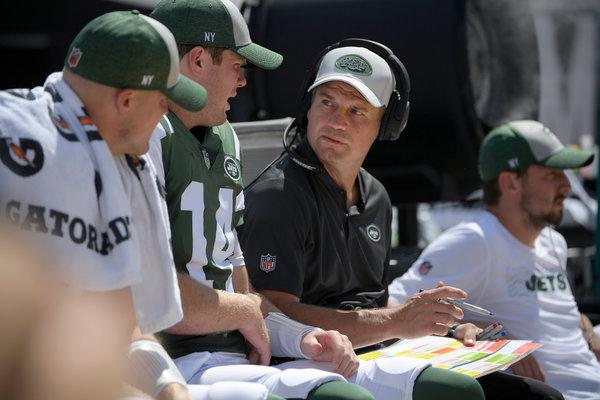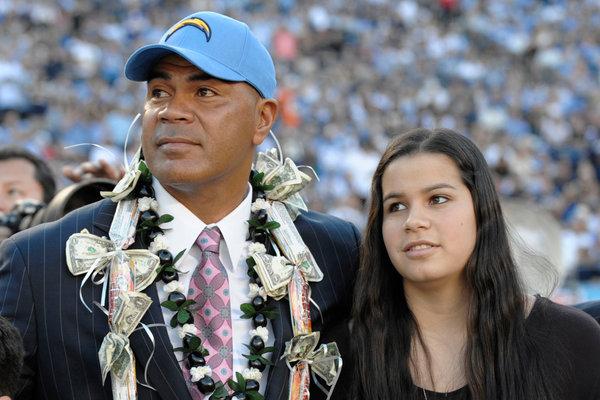Supported by
The Old Tiger Woods Is Gone. His Replacement Is Doing Fine.
As he strode down the 18th fairway, it felt like a renewal for Tiger Woods in every sense, a walk where he tried to leave behind the psychodrama of his life in the last decade.
On the final green of the Tour Championship in Atlanta on Sunday, he finally putted his ball into the hole, and as he raised his arms and smiled broadly, the cheering seemed as if it would never stop — just like the old days.
But if this was not the old Tiger, winning his first tournament after a five-year drought, it was at least a different version, something fans across the sporting world appeared to grasp. Woods’s myriad troubles, from serial adultery to an arrest last year as he sat asleep at the wheel of his car with the motor running, had made him difficult to embrace for many golf fans, even as he tried to remake himself.
On Sunday, it seemed fans were hungry for a Tiger Woods uncomplicated by scandal or injury or caught up in the political crosscurrents of the day and instead purely masterful at golf.
Like a conquering (or is it comeback?) hero, he marched forcefully through a delirious throng that pushed past security guards to follow and encircle him in a wave not seen before in modern golf.
Now what?
His breakthrough victory could have multiple ripple effects for golf. For one, as was evident when he won his first major championship in 1997, a contending Woods makes casual sports fans watch televised golf — ratings tend to soar when he is on the course. He has a similar impact on attendance at golf events, as he did on Sunday in Atlanta.
On Monday, the Golf Channel announced that NBC’s final round coverage of the Tour Championship drew a 5.21 overnight rating. That’s an increase of 206 percent over the 2017 tournament.
It is also possible Woods will attract a new generation of golf fans, and maybe even participants to the game. Many young sports fans had no doubt heard about Woods’s many stirring championships, but they had not witnessed one.
Quantifying the economic impact on the PGA Tour is a little trickier. Woods’s presence makes the PGA Tour more attractive to sponsors, and it lifts associated companies, like Bridgestone, which recently had the good fortune to sign Woods to a new deal to use its golf ball. If Woods is again contending at most tournaments, golf in general becomes more relevant and mainstream, and that in turn benefits every facet of the game, from public golf courses to equipment and apparel makers.
That all depends on Woods’s staying power on the course, but for now fans new and old — and the various corporate interests that make money off golf — caught a glimpse of the kind of mania that a dominant Tiger Woods can elicit, an enthusiasm that history has shown to be contagious. And come April, when the Masters tournament begins in Georgia, guess who will be among the favorites to win — if not the favorite? It will be Woods, the four-time Masters champion.
Woods’s victory Sunday could also revive a debate that drew fans to the game for most of the 2000s: Will Tiger meet or exceed Jack Nicklaus’s record of 18 major championships?
Sports fans of any ilk love the drama of someone trying to rewrite the record book.
And if nothing else, Woods, at 42, becomes the deft if aging counterpoint to the flock of young golf guns in their 20s who have overtaken the top of the worldwide rankings. By Sunday night, Woods’s world ranking had jumped to 13, from 1,193 at the end of 2017.
The big question in the golf world, however, was if the renewed Tiger would still be victorious.
Here was a former champion, perhaps the greatest in the history of the sport, whose career was ruined by an ultra-public scandal spawned by his own personal, ignominious excesses.
Slowly, Woods regained some measure of credibility and success only to be abruptly undone by his own body. All manner of anguished injuries occurred, which led to four back operations beginning in the spring of 2014. Last year, six weeks after the last of those procedures, Woods’s arrest signaled a rock bottom. Woods blamed the situation on a bad combination of pain medications to deal with the recovery from his back reconstruction.
From 2015 through 2017, often limping or clearly playing in pain, Woods entered only 12 tournaments, and the results were embarrassing. The onetime king of golf, the winner of 14 major championships, plummeted to the bottom of the world rankings.
Chastened, Woods conceded he might never win another golf tournament. At various points, unable to stand or sit without pain, Woods wondered if he might ever play again.
But then, step by step this year, Woods rediscovered his swing, and perhaps himself.
“Tiger is an introvert, and sometimes introverts need to listen to themselves,” David L. Cook, a sports psychology consultant for many professional golfers and the author of “The Psychology of Tournament Golf,” said Sunday night. “The best voice for Tiger is the one inside him. He became his own teacher and chose to return to the simplicity of his old swing.”
Shockingly, this summer, Woods began to contend again for golf championships. He had the lead at the British Open with nine holes to play before faltering in the waning moments.
At each of his matches this year, Woods was something else: wildly popular in a way he had never been before. He had always been celebrated, even respected. Now he was beloved.
In Atlanta last week, Woods announced he would again be a contender, with a sparkling first round of 65. Almost instantly, ticket sales for the tournament jumped 30 percent. By Saturday night, Woods had a three-shot lead with one round to go. Anticipation for the final round was palpable. Even on a busy N.F.L. Sunday, sports fans were making sure to schedule their days around watching golf in the late afternoon.
And as a performer and entertainer, Woods did not disappoint as he took control of the tournament from the outset. He built a commanding five-stroke lead with seven holes to play, and while he appeared a little rattled in the closing stages, he had the victory in hand when he began marching toward the 18th hole, with an escort of thousands of jubilant supporters in tow.
“I felt like crying, and I did begin to tear up,” Woods later said of his advance on the final green. “But I had to pull myself together because I still had a few shots to finish what I started.”
When it was over, the cheering for Woods all but drowned out the television announcers who were talking into microphones pressed directly to their lips.
“I’ve had a not-so-easy few years,” Woods said. “And this entire year, the fan support has been like nothing I ever remember. When I came back, I didn’t know what to expect. But the energy from the fans has uplifted me on those days when it was difficult for me. They’ve been great to me.”
Tiger, in some form, is back. But there is something new. His people missed him.
On Golf
An occasional column looking at the news, issues and personalities of golf.
- Banksy Painting Self-Destructs After Fetching $1.4 Million at Sotheby’s
- Collins and Manchin Will Vote for Kavanaugh, Ensuring His Confirmation
- The Nazi Downstairs: A Jewish Woman’s Tale of Hiding in Her Home
- Trump Engaged in Suspect Tax Schemes as He Reaped Riches From His Father
- Opinion: The High Court Brought Low
- Susan Collins, Standing Alone, Makes Her Case for Kavanaugh
- Opinion: What It All Meant
- Opinion: An Insidious and Contagious American Presidency
- U.S. General Considered Nuclear Response in Vietnam War, Cables Show
- F.B.I. Review of Kavanaugh Was Limited From the Start
Advertisement
The article "On Golf: The Old Tiger Woods Is Gone. His Replacement Is Doing Fine." was originally published on https://www.nytimes.com/2018/09/24/sports/tiger-woods-pga-golf.html?partner=rss&emc=rss














